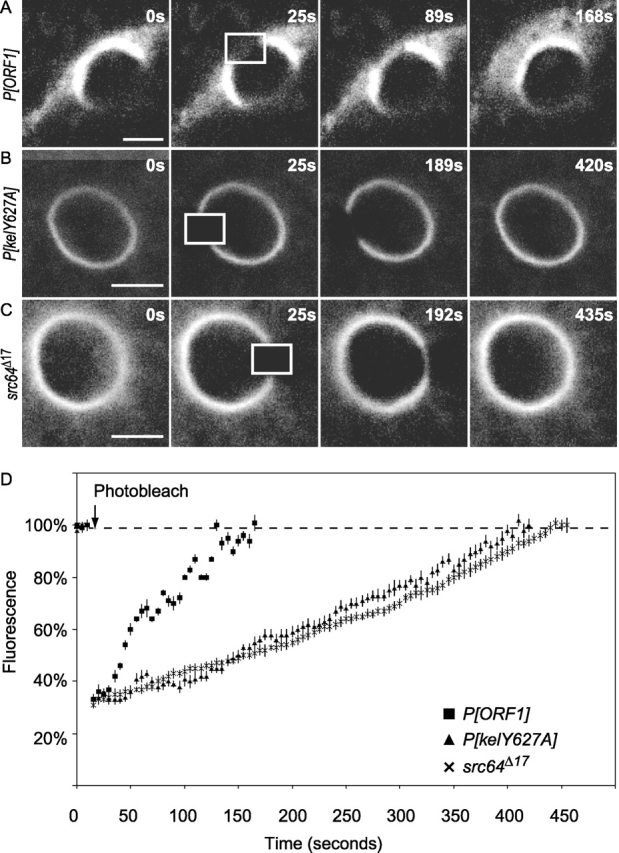Figure 8.

Photobleaching reveals reduced monomer exchange in KelY627A and src64 Δ17 ring canals. FRAP experiments with GFP–actin were used to measure actin dynamics in kelch mutant ring canals, containing either wild-type (P[ORF1]) or mutant (P[kelY627A]) rescuing transgenes, and in src64 Δ 17. (A) A representative time series of FRAP in a ring canal expressing wild-type Kelch (P[ORF1]). The box outlined at 25 s represents the area photobleached by the laser. By 168 s, all of the fluorescence had returned. (B) A similar time series of FRAP in a ring canal expressing nonphosphorylatable Kelch (P[kelY627A]). The area bleached at 25 s took 420 s to recover. (C) A FRAP assay of src64Δ17, where the area bleached at 25 s took 435 s to recover. Bars, 5 μm. (D) A graph representing FRAP of 21 P[ORF1] (▪), 23 P[kelY627A] (▴), and 15 src64 Δ 17 (×) stage 10A ring canals with error bars representing the standard deviation. P[kelY627A] and src64 Δ 17 ring canals take more than three times as long to recover to prebleach levels as P[ORF1] ring canals.
